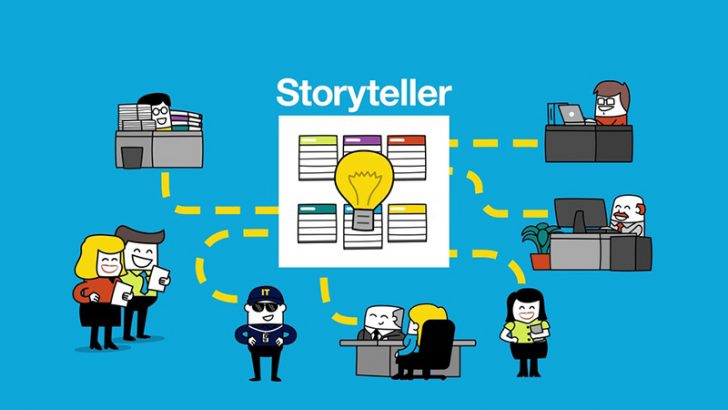Blueprint Software has announced the release of Storyteller for JIRA. It aims to speed up the delivery of Agile IT projects by capturing all the details of user stories. User stories provide an alternative to the traditional requirements process used by developers. They describe who the users of a software product are, what they want and why they want it.

The user stories in most Agile IT projects are not written by the end-user. They are gathered by members of the development team. This creates a problem as they often miss the nuances between different user views. They write from the perspective on one user but don’t capture the requirements of all the others.
Ruth Zive, vice president of marketing, Blueprint Software, said: “Transitioning from Waterfall to Agile can cause many issues for organizations. A critical issue here is that business stakeholders and analysts don’t know how to write good user stories. Storyteller for JIRA solves this issue by creating a visual process that doesn’t rely on lengthy training or a wall full of sticky notes. With just a few clicks and easily answered questions, user stories are automatically generated, streamlining and accelerating the development process.”
Why use customer stories rather than requirements documents?
Customer stories look at how systems works from the user perspective. They capture the way users interact with systems and, more importantly, changes to business processes. The latter is critical yet often goes unseen. There can be differences between the written business process and the way it is implemented by employees. This enables employees to get their jobs done effectively. These changes are never reflected back into the core business processes.
Compliance is a good example of where this can go wrong. Enterprises are coming under increasing pressure to meet stricter regulatory requirements. Those who design the processes are rarely those who have to implement them and almost never those who use them. Companies often have little understanding of how employees handle customer details. This exposes the company to compliance issues. These are caused by good intentions not malicious behaviour, something that compliance audits don’t identify.
With users under pressure to “do their job” they look for shortcuts and workarounds. This is not intended to break laws or cause problems for the company. Instead it is designed to enable the employee to do their job as quickly and effectively as possible. This is why when new systems are being designed user stories provide an interesting viewpoint.
User stories can help compliance and IT security teams spot problems with systems. They help identify security risks through system and process failures. Many of those failures are because processes change faster than IT systems. This is where Agile development is pitching its benefit, the ability to have IT work at the speed of the business.
Storyteller helping to tell the whole user story
This is where Storyteller claims to help. It makes it easier to create complete user stories rather than keep rewriting and recoding software. This stops reworked user stories becoming cumbersome and unwieldy. To get around this some development teams end up creating multiple user stories. This forces developers to pick and mix features from different stories which creates conflict between users and developers.
Blueprint Software is claiming Storyteller delivers three key benefits for JIRA developers:
- Defining customer journeys: All stakeholders can easily define customer journeys as process flows, with tasks, decision points and detailed condition statements. By capturing everything developers are able to get it right first time saving time and money.
- Better user stories: Stakeholders can automatically generate user stories and acceptance criteria for the next sprint. User stories are reliable and consistent, and companies no longer need to expend time and resources to train people on how to write them.
- Improving collaboration: Storyteller for JIRA improves the quality of user stories and removes the bottleneck and burden of Product Owners having to understand all elements independently. This creates a more collaborative process that is far less likely to miss important requirements, which can result in failure.
Conclusion
Business units are demanding that IT works to their schedule and delivers the update they want, when they want them. This has forced IT to become more responsive. In a world of mobile solutions users want things to change quickly and deliver what they want. This can only happen if IT understands what users want and traditional requirements methods don’t deliver this.



























